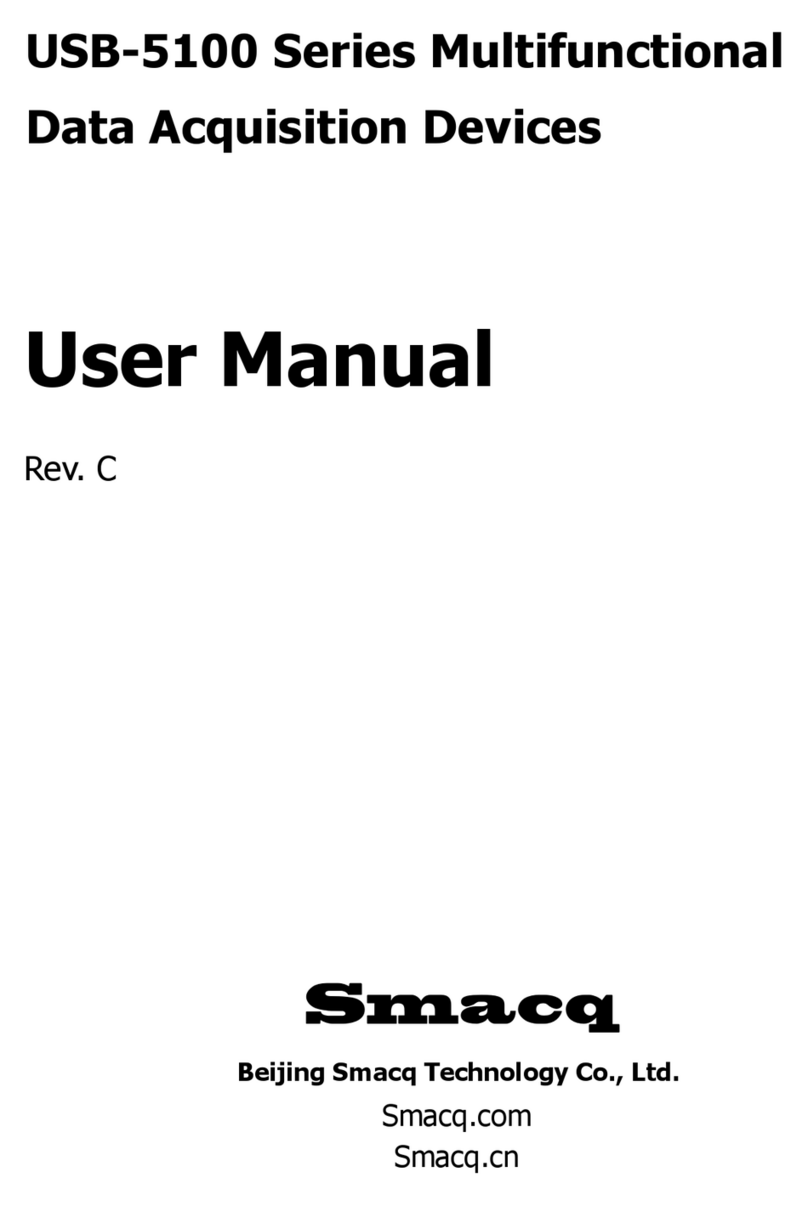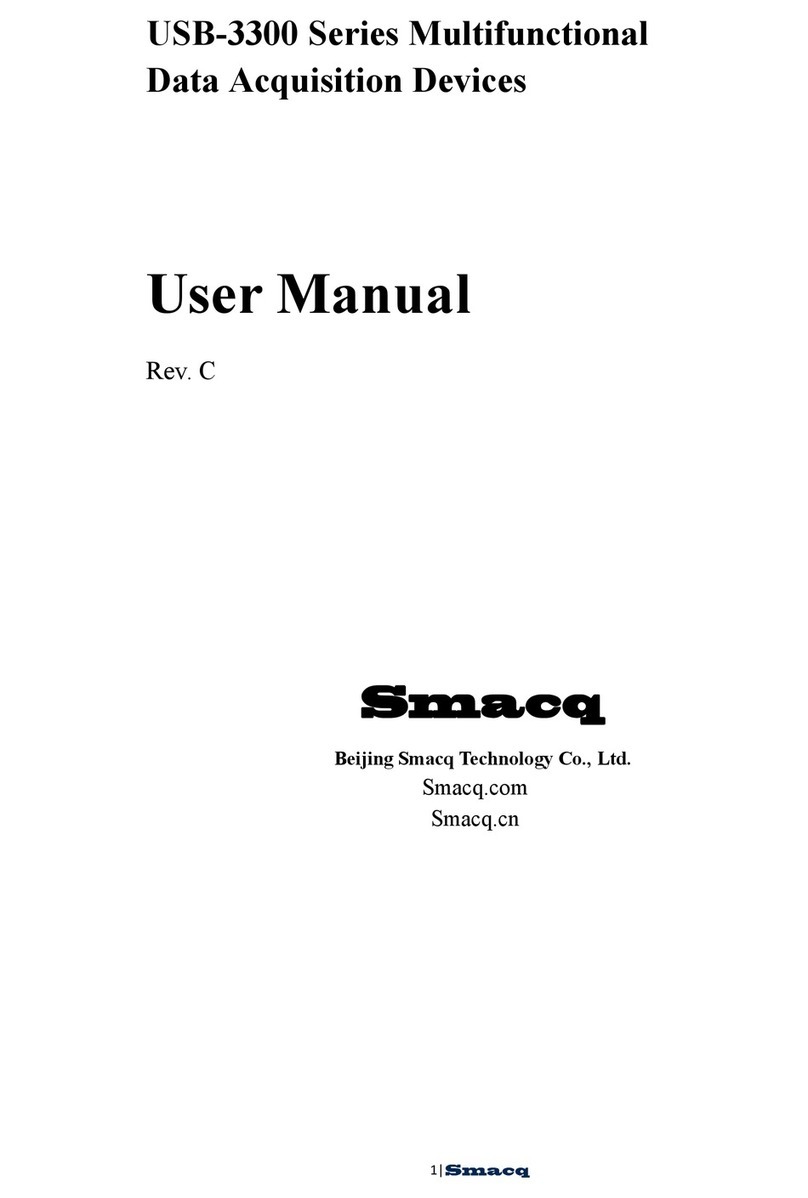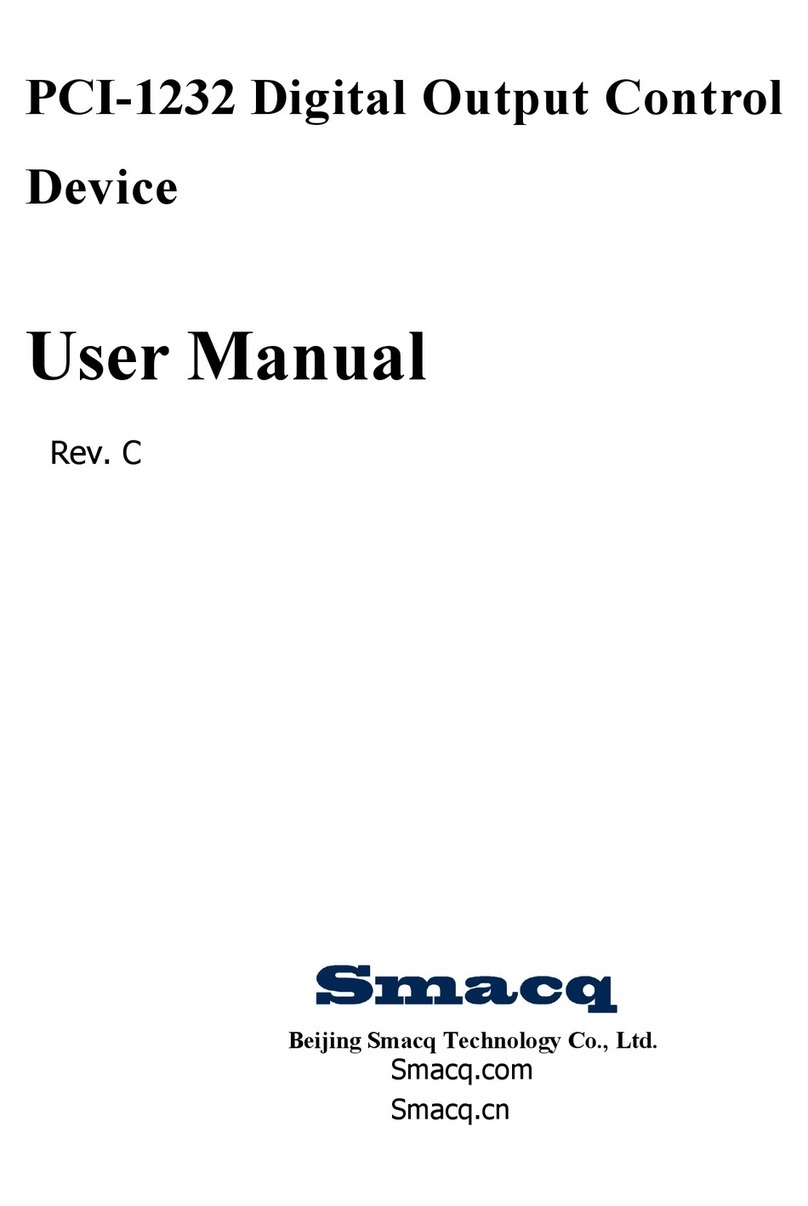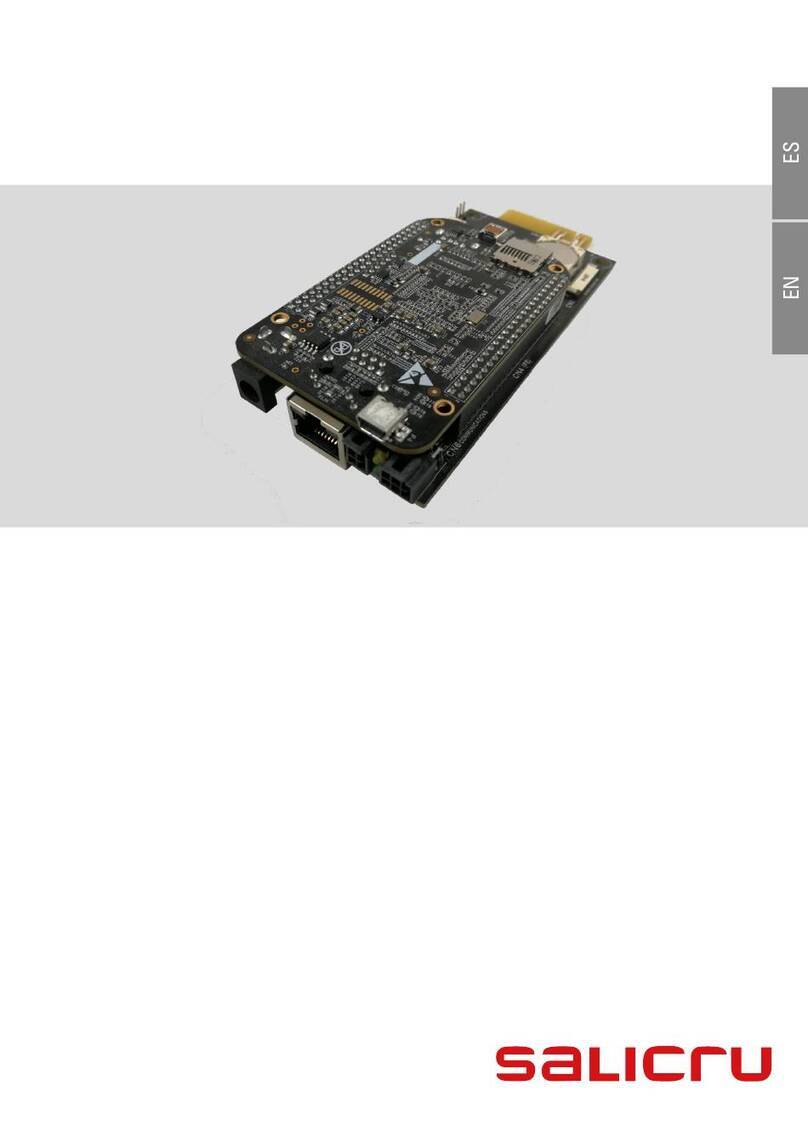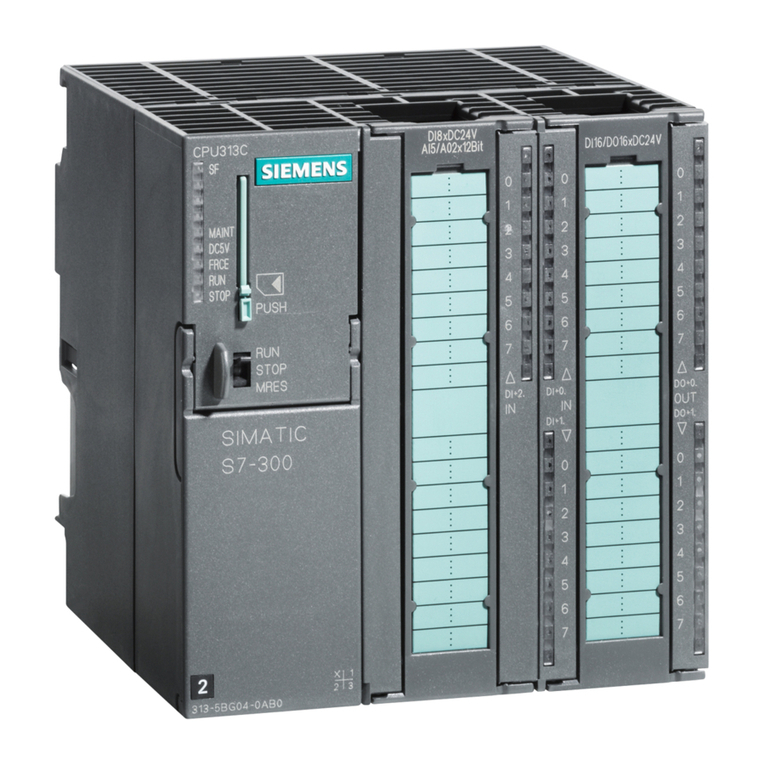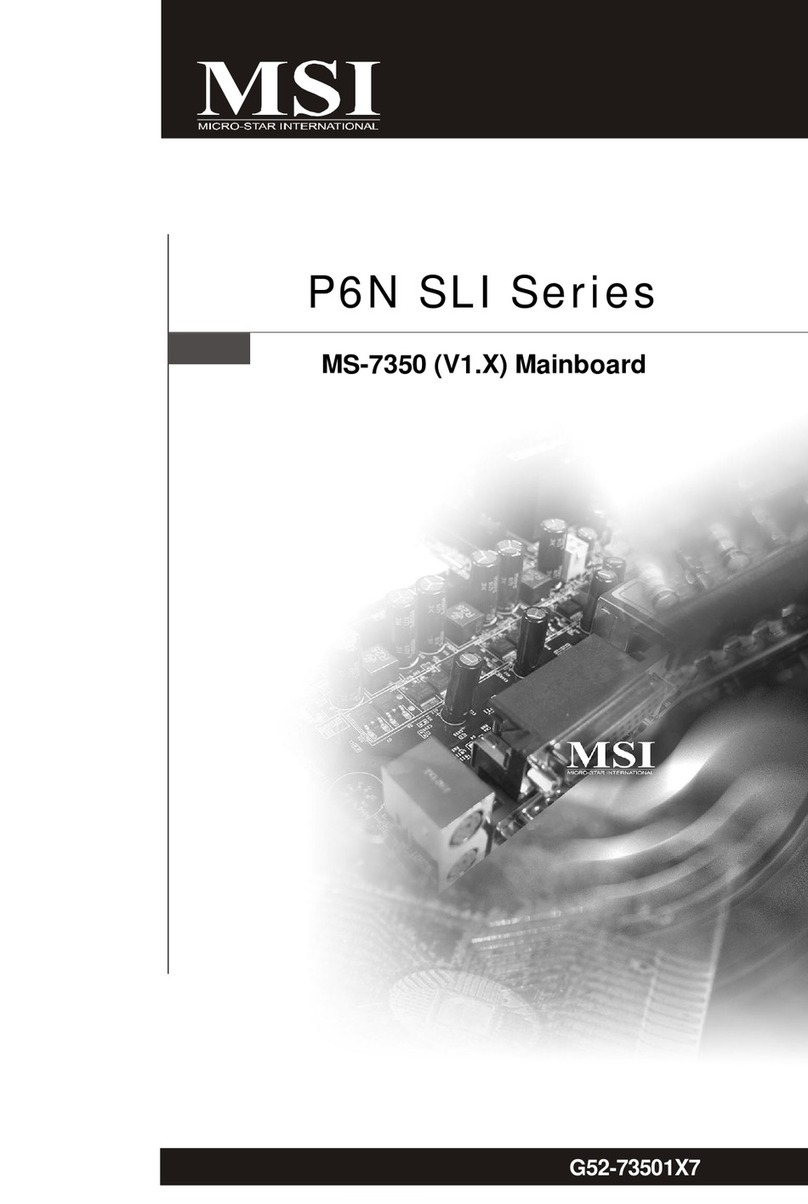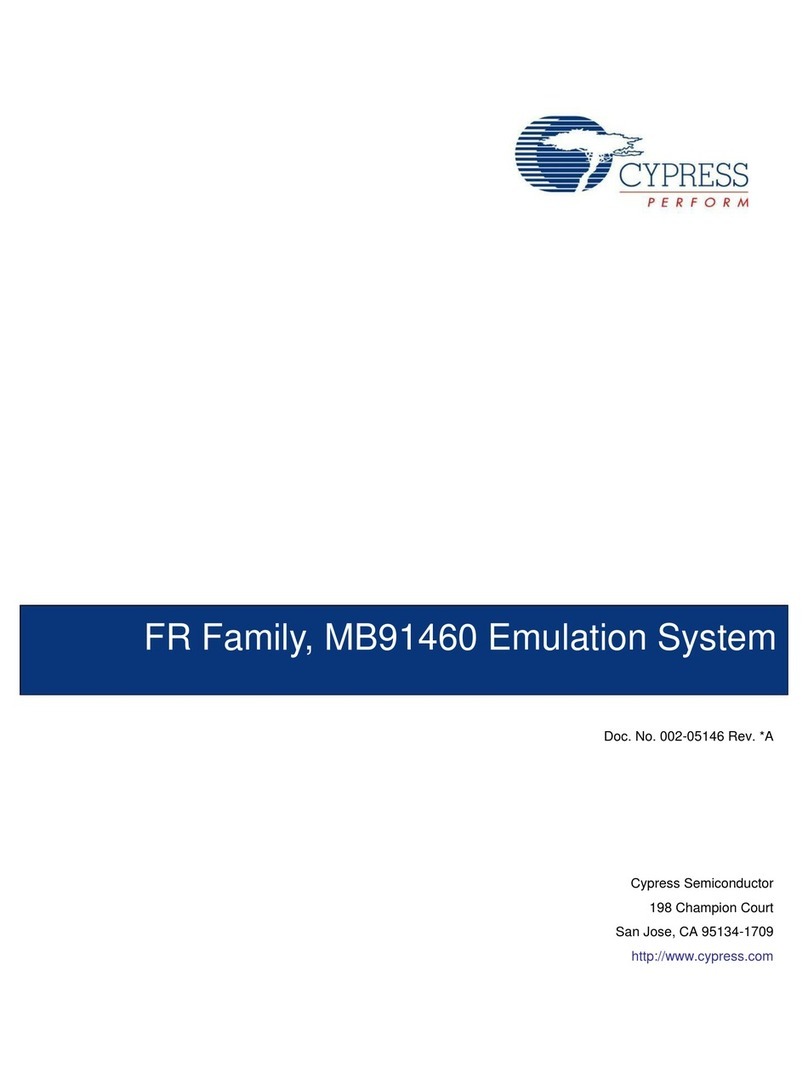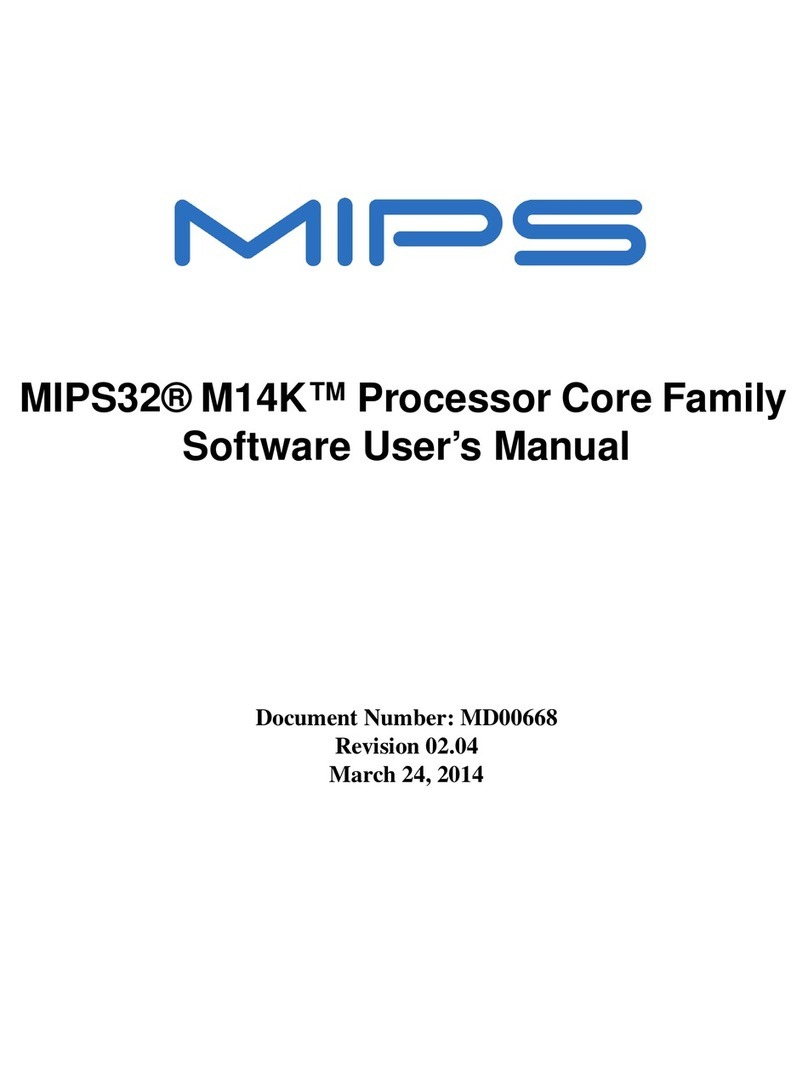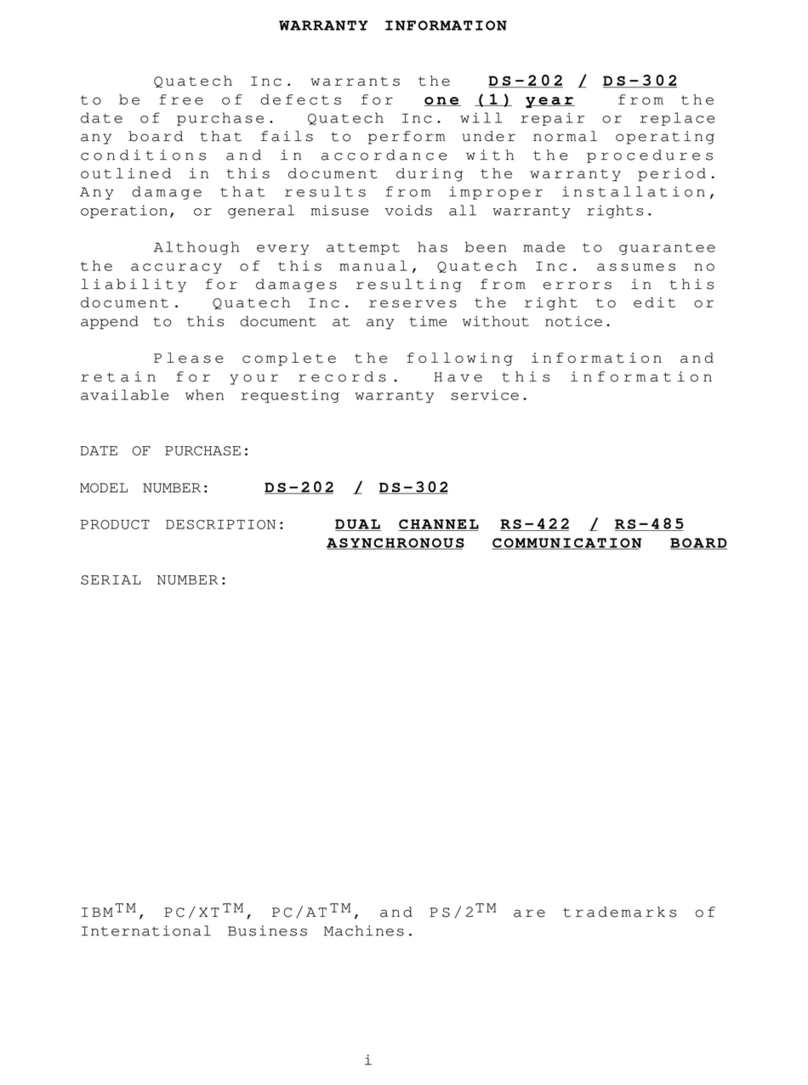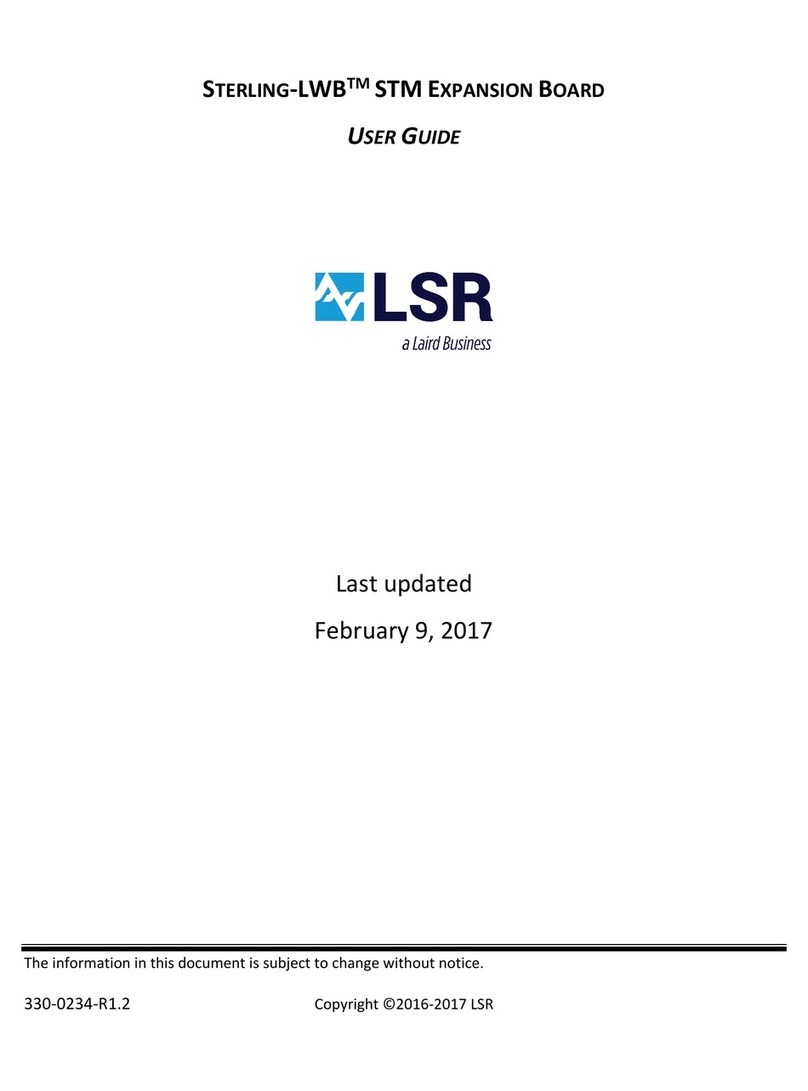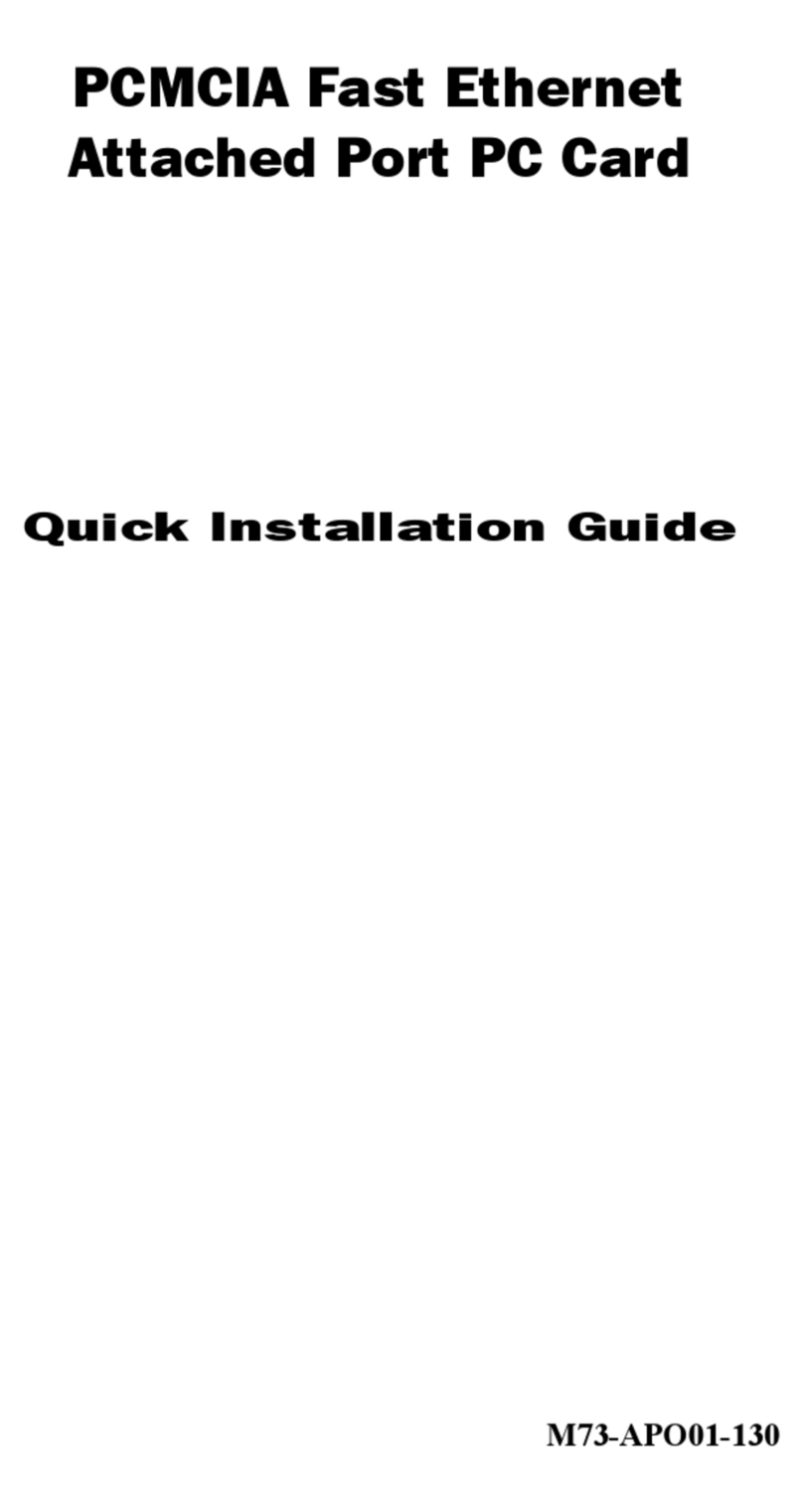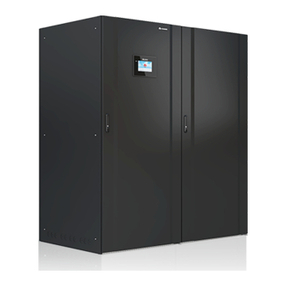Smacq Technologies PCI-3000 Series User manual

PCI-3000 Series Multifunctional Data
Acquisition Devices
User Manual
Rev. A
Beijing Smacq Technology Co., Ltd.
Smacq.com
Smacq.cn

1 |
Statement
Copyright
©2021 Beijing Smacq Technology Co., Ltd. All rights reserved
No content of this manual may be reproduced, modified or abridged without prior consent and
written permission.
Trademark information
Smacq is a registered trademark of Beijing Smacq Technology Co., Ltd.
The names of the other products and companies mentioned in this document are trademarks ortrade
names of their respective companies.
Other Disclaimer
The information provided in this document may be modified and updated in subsequent
versions without prior notice.
Smacq does not provide any warranties, express or implied, for this document as well as the
information inside it, including but not limited to implied warranties of the marketable nature of
the product and its suitability for a particular purpose.
There may be a chance that inaccurate descriptions or errors exist in this document. Smacq does
not hold any liability for accidents because of the information and deductive functions provided
in this manual, as well as the resulting loss of any chance because of the use of this document.
Smacq reserves the rights to change product specifications, prices, and decide whether to stop
the production.
Contact Us
If you have any questions or need assistance in using this product or this document, please contact us
via:
Phone: (+86)10 - 52482802
E-Mail: service@smacq.com
Website: http://www.smacq.com
http://www.smacq.cn

2 |
Safety Requirements
Warning
Only the voltage within the specified range can be connected. Voltage
exceeding the specified range may cause damage to
the device, and
even present a negative impact on personal safety. Check the product
specification for detailed reference to the range of voltages that can be
connected by each port.
Warning
Do not attempt to operate the device in other ways that are not
mentioned in this document. Incorrect use of the device may be
dangerous. In the event of device damage, the internal security
protection mechanism will also be affected.
Warning
Do not attempt to replace device components or change devices in other
ways that are not mentioned in this document. Do not repair the device
yourself in the event of a product failure.
Warning
Do not use the device in an environment where an explosion may occur
or where flammable flue or gas is present. If you must use the
device in
this kind of environment, please fit it into a proper case.
Warning
While the device is running, all chassis covers and fill panels need to be
closed.
Warning
For equipment with exhaust vents, do not insert foreign objects into the
vents or
block air circulation in the vents.

3 |
Warning
For use in measurement category I (CAT I) only. Do not use in
measurement category II/III/IV. Use this device to connect signals
or make measurements.
Measurement Categories
Measurement categories Note
Measurement categories I (CAT I) means that measurements are made on a circuit that is not directly
connected to the main power supply. For example, a circuit that is not exported from the main power
supply, especially a circuit that is exported from a protected (internal) primary power supply, is
measured. In the latter case, the instantaneous stress will change. Therefore, the user should be aware
of the instantaneous affordability of the device.
Measurement categories II (CAT II) means that measurements are made on a circuit that is directly
connected to a low-voltage device. For example, a measurement on household appliances, portable
tools and similar equipment.
Measurement categories III (CAT III) means that measurements are made in construction equipment.
For example, a measurement on the distribution boards, circuit breakers, wiring (including cables,
Busbars, junction boxes, switches, sockets) in fixed equipment and equipment for industrial use and
certain other equipment (for example, fixed motors that are permanently connected to fixtures).
Measurement categories IV (CAT IV) means that measurements are made on the source of low-
voltage equipment. For example, a measurement on a meter, a major overcurrent protection device,
and a pulse control unit.

4 |
Warning Some of the substances contained in this product may be harmful
to the environment or human health. In order to avoid releasing
harmful substances into the environment or endangering human
health, it is recommended that appropriate methods be used to
recover this product to ensure that most materials can be
properly reused or recycled. For information about processing or
recycling, please contact your local professional organizations.
Environment
Temperature
Operating 0℃ ~ 55℃
Storage -40℃ ~ 85℃
Humidity
Operating 5%RH ~ 95%RH, no condensation
Storage 5%RH ~ 95%RH, no condensation
Pollution degree 2
Highest elevation 2000 m
Pollution degree description
Pollution degree 1: No pollution, or only dry non-conductive pollution. This pollution degree has no
effect. For example: a clean room or an air-conditioned office environment.
Pollution degree 2: Generally only dry non-conductive pollution occurs. Temporary conduction can
sometimes occur due to condensation. For example: General indoor environment.
Pollution degree 3: Conductive pollution occurs, or dry non-conductive pollution becomes
conductive due to condensation. For example, an outdoor sheltered environment.
Pollution degree 4: Permanent conductive pollution caused by conductive dust, rain, or snow. For
example: Outdoor places.
Recycle precautions

5 |
CONTENT
Statement .......................................................................................................1
Safety Requirements.......................................................................................2
Measurement Categories ...............................................................................3
Environment ...................................................................................................4
1. Getting Started..........................................................................................7
1.1. Product introduction...........................................................................7
1.2. Function Diagram..............................................................................10
1.3. Product specifications.......................................................................10
1.4. Product unpacking ............................................................................15
Precautions .............................................................................................15
Check the packing list..............................................................................15
2. Installation ..............................................................................................16
2.1. Connector signal pins distribution ....................................................16
2.2. Drive installation ...............................................................................19
3. Analog Input(AI)................................................................................24
3.1. Signal connection methods...............................................................24
3.2. Floating grounded signal source .......................................................25
Using differential mode (DIFF) connection .............................................25
Non-grounded reference single-ended mode (NRSE) connection..........27
3.3. Grounded Signal Source....................................................................28
Use a differential mode (DIFF) connection .............................................28
Use a non-grounded reference single-ended mode (NRSE) connection.29
3.4. Signal acquisition mode ....................................................................30
Continuous acquisition mode .................................................................30
Limited number acquisition mode ..........................................................31
Single point reading ................................................................................31
3.5. Comprehensive sampling rate and single channel sampling rate.....31
3.6. Trigger...............................................................................................31
Clear trigger ............................................................................................32
4. Analog Output (AO) ................................................................................33
4.1. Signal output mode...........................................................................33
DC immediate output .............................................................................33

6 |
Finite number output mode ...................................................................33
Infinite loop output mode.......................................................................34
Infinite non-loop output mode ...............................................................34
4.2. Output update rate ...........................................................................34
4.3. Trigger...............................................................................................34
Clear trigger ............................................................................................35
5. Digital Input(DI).................................................................................36
5.1. Signal acquisition mode ....................................................................36
Continuous acquisition mode .................................................................36
Limited number acquisition mode ..........................................................36
Single read ..............................................................................................36
5.2. Trigger...............................................................................................37
Clear Trigger............................................................................................37
6. Digital Output(DO).............................................................................38
6.1. Signal output mode...........................................................................38
Immediate output...................................................................................38
Finite number output mode ...................................................................38
Infinite loop output mode.......................................................................38
Infinite non-loop output mode ...............................................................39
6.2. Output update rate ...........................................................................39
6.3. Trigger...............................................................................................39
Clear trigger ............................................................................................39
7. Synchronization System ..........................................................................40
7.1. Synchronous clock ............................................................................40
7.2. External trigger input ........................................................................40
7.3. Trigger output ...................................................................................40
8. Service and Warranty..............................................................................42
9. Ordering Information..............................................................................43

7 |
1. Getting Started
This chapter describes the basic functions of PCI-3000 Series Data Acquisition Device, as well as
product specifications and precautions in the process of product unpacking.
1.1. Product introduction
PCI-3000 series data acquisition device is a multi-functional data acquisition device based on PCI
bus, which can be used for continuous high-speed signal acquisition and control signal output when
installed ina computer.
PCI-3000 series of data acquisition devices can measure analog and digital signals continuously and
save the data to the computer hard drive without interruption. Itcan also provide digital signal output,
periodic repetitive signal output
PCI-3000 series data acquisition device supports operating in Windows OS, providing standard
DLLs and support for mainstream development languages including VC++, VB, C#, LabVIEW,and
MATLAB.
Key Features
16-bit analog input resolution, support continuous uninterrupted acquisition
Up to 1MS/s sampling rate for analog input
The input can be set to various ranges of ±10V/5V/2.5V/1.25V/0.6V by software.
Analog input channels support single-ended or differential wiring.
16-bit analog output resolution, with output range of ±10V
Up to 1MS/s sampling rate for analog input
Up to 10MS/s/Ch sampling rate for digital I/O

8 |
PCI-3000 series data acquisition device contains several models, and the main differences of each
model are as follows:
PCI-3210
PCI-3211
PCI-3212
PCI-3213
Analog input
channel quantity
8 Single-Ended
/ 4 Difference
8 Single-Ended /
4 Difference
8 Single-Ended
/
4 Difference
8 Single-Ended
/ 4 Difference
Analog input
resolution
16-bit 16-bit 16-bit 16-bit
Analog input
Sampling rate
125kS/s 250kS/s 500kS/s 1MS/s
Analog output
channel quantity
0 0 0 0
PCI-3220
PCI-3221
PCI-3222
PCI-3223
Analog input
channel quantity
16 Single-Ended
/ 8 Difference
16 Single-Ended
/ 8 Difference
16 Single-Ended
/ 8 Difference
16 Single-Ended
/ 8 Difference
Analog input
resolution
16-bit 16-bit 16-bit 16-bit
Analog input
Sampling rate
125kS/s 250kS/s 500kS/s 1MS/s
Analog output
channel quantity
0 0 0 0
PCI-3110
PCI-3111
PCI-3112
PCI-3113
Analog input
channel quantity
8 Single-Ended
/ 4 Difference
8 Single-Ended /
4 Difference
8 Single-Ended
/
4 Difference
8 Single-Ended
/ 4 Difference
Analog input
resolution
16-bit 16-bit 16-bit 16-bit
Analog input
Sampling rate
125kS/s 250kS/s 500kS/s 1MS/s
Analog output
channel quantity
2 2 2 2
Analog output
resolution
16-bit 16-bit 16-bit 16-bit
Analog output
Sampling rate
1MS/s 1MS/s 1MS/s 1MS/s

9 |
PCI-3120
PCI-3121
PCI-3122
PCI-3123
Analog input
channel quantity
16 Single-Ended
/ 8 Difference
16 Single-Ended
/ 8 Difference
16 Single-Ended
/ 8 Difference
16 Single-Ended
/ 8 Difference
Analog input
resolution
16-bit 16-bit 16-bit 16-bit
Analog input
Sampling rate
125kS/s 250kS/s 500kS/s 1MS/s
Analog output
channel quantity
2 2 2 2
Analog output
resolution
16-bit 16-bit 16-bit 16-bit
Analog output
Sampling rate
1MS/s 1MS/s 1MS/s 1MS/s

10 |
1.2. Function Diagram
Figure 1.1 shows the schematic diagram of PCI-3000 series data acquisition device.
Digital system
PCI bus
Trigger source:
Software trigger
External trigger
Din trigger
Sampling clock source:
Internal module sampling
clock source
External sampling clock
source
AI
Digital I/O
FIFO cache
AO
Figure 1.1 PCI-3000 series data acquisition device functions
1.3. Product specifications
The following product specification parameters, unless otherwise stated, are acquired at the
temperature of 25°C and the humidity of 40%, while the device is turned on for 20 minutes.
Analog input
Number of channels
PCI-3210/3211/3212/3213/3110/3111/3112/3113:8 Single-Ended /4
Difference
PCI-3220/3221/3222/3223/3120/3121/3122/3123:16 Single-Ended / 8
Difference
ADC type SAR
Resolution 16-bit

11 |
Highest sampling rate
(If multi-channel is used, the sampling rate refers to the sum of
multi-channel sampling rates. )
PCI-3213/3223/3113/3123: 1MS/s max., continuous
PCI-3212/3222/3112/3122: 500kS/s max, continuous
PCI-3211/3221/3111/3121:250kS/s max, continuous
PCI-3210/3220/3110/3120:125kS/s max, continuous
Timing resolution
10ns
Channel
synchronization
No
Range ±10.24V/±5.12V/±2.56V/±1.28V/±0.64V/
Input coupling mode
DC
Input impedance High resistance
Small signal bandwidth
(-3db
)
1MHz
Input bias current
200nA
Analog input max
voltage
The ground voltage of each input side does not exceed ±12 V
Software FIFO 2 MPts/Ch
Onboard FIFO
4096 Pts(shared)
AI capture mode
Continuous acquisition mode / Limited number acquisition mode /
Single point reading

12 |
Analog input accuracy (with temperature coefficient of 5 ppm/℃)
Range Gain error
(ppm of reading)
Offset error
(ppm of range)
Random noise
(μVrms)
Full range absolute
accuracy
(μV)
±10.24V 20 10 195 820
±5.12V
50
15
110
550
±2.56V
55
30
70
215
±1.28V
100
60
60
220
±0.64V
200
120
50
100
Analog output
Number of channels
2
Resolution 16-bit
DNL
±1 LSB
Output voltage
establishment time
1us
Edge slope
V/us
Channel
synchronization
Yes
Output range
±10V
Output coupling
DC
Output impedance
50 Ω
Output drive current
10 mA
Power-on status The initial power-on value can be set.
AO output mode
DC direct output / finite length waveform output / Infinite non-
loop output
Analog output accuracy
Range (V)
-10 ~ 10
Gain error (reading’s ppm) 30
Gain temperature coefficient (reading’s
ppm/℃)
5
Offset error (range’s ppm)
50
Offset temperature coefficient (range’s
ppm/℃)
5
Full range absolute precision (mV) 5
Reference temperature coefficient
(ppm/℃)
5
INL error (range’s ppm) 120

13 |
Digital I/O
Number of channels 8
Ground reference DGND
Direction I/O can be set, and the power-on default value can be set.
Digital input voltage High level:1.95 V ~ 5 V
Low level:0 V ~ 1.2 V
Digital output voltage High level:3.3 V
Low level: 0 V ~ 0.003 V
Highest sampling rate 10MS/s
Timing resolution 10 ns
Channel
synchronization Yes
Software FIFO 2MPts
Onboard FIFO 4096 Pts(shared)
Digital input acquisition
mode
Continuous acquisition mode
/ Limited collection mode / Single read
Digital output mode Direct output / finite length waveform output / Infinite non-
loop
output
External trigger
Number of channels 1 input, 1 output
Input voltage High level:1.95 V ~ 5 V
Low level:0 V ~ 1.2 V
Output voltage High level:3.3 V
Low level:0 V ~ 0.003 V
Output power-on status
Low level
Output edge time Ascending edge: 6ns
Descending edge: 8ns

14 |
Calibration
Recommended warm-
up time No less than 20Minutes
Recommended
calibration interval 1year

15 |
1.4. Product unpacking
Precautions
To prevent electrostatic discharge (ESD) from damaging the device, please note the following:
Please wear a grounding wristband or touch a grounded object first to ensure being
grounded.
Before removing the equipment from the packaging, please first connect the anti-static
packaging to the grounded object.
Do not touch the exposed pins of the connector.
Place your device in anti-static packaging when you are not using the device.
Check the packing list
After unpacking the product, follow the packing list in the box, check the host and each attachment
individually to ensure that the items in the box are consistent with the packing list.
If you find that any item is missing, please get in touch with us for help as soon as possible.
If you find that the product comes in damaged after unpacking, please get in touch with us as soon as
possible. Do not install damaged equipment on your devices.

16 |
Signal
connector
DB37
Clock
synchronization
interface
2. Installation
This chapter describes signal connection and drive installation of PCI-3000 series data acquisition
device.
2.1. Connector signal pins distribution
Figure 2.1 PCI-3000 signal pins distribution

17 |
37
36
35
34
33
32
31
30
29
28
27
26
25
24
23
22
21
20
9
7
5
3
1
10 8 6 4 2
9: SYNC_CLK
2/4/6/8/10: GND
1/3/5/7: NC
Figure 2.2Signal connector distribution diagram
Figure 2.3Clock interface signal distribution diagram
Table 2.1, Signal pin allocation
Signal name
Single-ended input
Differential input
AI 0
Analog input 0 Analog input 0 Cathode
AI 1
Analog input 1
Analog input 0 Negative
AI 2 Analog input 2 Analog input 2 Cathode
AI 3
Analog input 3
Analog input 2 Negative
AI 4 Analog input 4 Analog input 4 Cathode
19:AI 8
18
:
AI 9
17
:
AI 10
16
:
AI 11
15
:
AI 12
14
:
AI 13
13
:
AI 14
12
:
AI 15
11
:
AI SENSE 1
10
:
GND
9
:
AO 0
8:GND
7
:
GND
6
:
DIO 7
5
:
DIO 5
4
:
DIO 3
3
:
DIO 1
2:DIO 0
1
:
GND
19
18
17
16
15
14
13
12
11
10
9
8
7
6
5
4
3
2
1
37:AI 7
36:AI 6
35
:
AI 5
34
:
AI 4
33
:
AI 3
32
:
AI 2
31
:
AI 1
30:AI 0
29
:
AI SENSE 0
28
:
GND
27
:
AO 1
26
:
GND
25
:
GND
24:DIO 6
23
:
DIO 4
22
:
DIO 2
21
:
TRIG OUT
20:TRIG IN

18 |
Signal name Single-ended input Differential input
AI 5 Analog input 5 Analog input 4 Negative
AI 6 Analog input 6 Analog input 6 Cathode
AI 7 Analog input 7 Analog input 6 Negative
AI SENSE 0 Signal negative pole of AI 0~ 7
single-ended input --
AI 8 Analog input 8 Analog input 8 Cathode
AI 9 Analog input 9Analog input 8 Negative
AI 10 Analog input 10 Analog input 10 Cathode
AI 11 Analog input 11 Analog input 10 Negative
AI 12 Analog input 12 Analog input 12 Cathode
AI 13 Analog input 13 Analog input 12 Negative
AI 14 Analog input 14 Analog input 14 Cathode
AI 15 Analog input 15 Analog input 14 Negative
AI SENSE 1 Signal negative pole of AI 8~ 15
single-ended input --
AO 0 Analog output 0 --
AO 1 Analog output 1 --
GND Reference ground Reference ground
DIO 0 Input/output 0 --
DIO 1 Input/output 1 --
DIO 2 Input/output 2 --
DIO 3 Input/output 3 --
DIO 4 Input/output 4 --
DIO 5 Input/output 5 --
DIO 6 Input/output 6 --
DIO 7 Input/output 7 --
TRIG OUT Trigger signal output --

19 |
TRIG IN External trigger signal input --
SYNC_CLK System synchronous clock
input/output
NC Not connected Not connected
2.2. Drive installation
PCI-3xxx data acquisition device can be used in Windows 7 and Windows 10, including 32-
bit and 64-bit. Here, taking the driver installation in Windows 10 environment as an
example, we will introduce how to install the driver of PCI-3000 data acquisition device
step by step. The steps of installing drivers in Windows 7 environment are the same as
those in Windows 10 environment.
1) Open the device manager of Windows operating system, and when the driver is
not installed, it is displayed as "PCI Data Capture and Signal Processing
Controller", as shown in Figure 2.4 below.
Figure 2.4Before the driver is installed
This manual suits for next models
16
Table of contents
Other Smacq Technologies Computer Hardware manuals
Popular Computer Hardware manuals by other brands
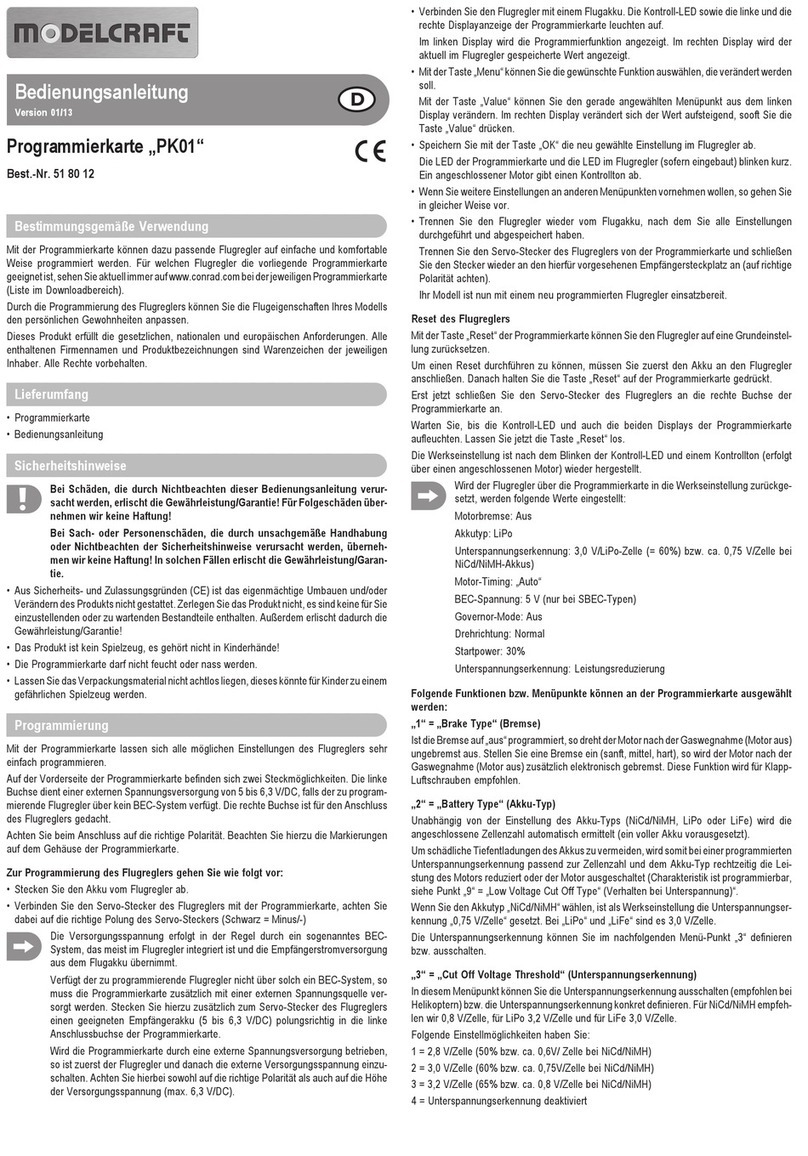
ModelCraft
ModelCraft PK01 operating instructions

ekwb
ekwb EK-Pro GPU WB RTX 8000 - Ni + Inox installation manual
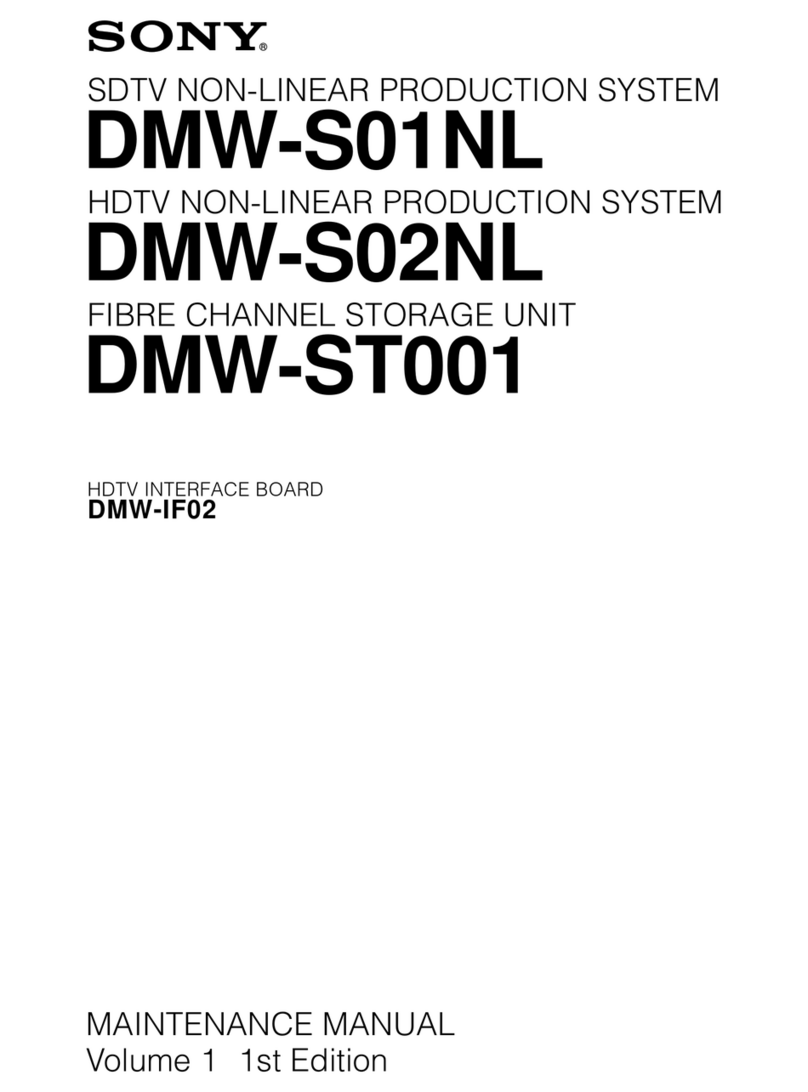
Sony
Sony DMW-S01NL Maintenance manual

ASRock Industrial
ASRock Industrial NUC BOX-N97 quick start guide
Silicon Laboratories
Silicon Laboratories C8051F04X-DK user guide

Emotiva
Emotiva DMC-1 user guide
